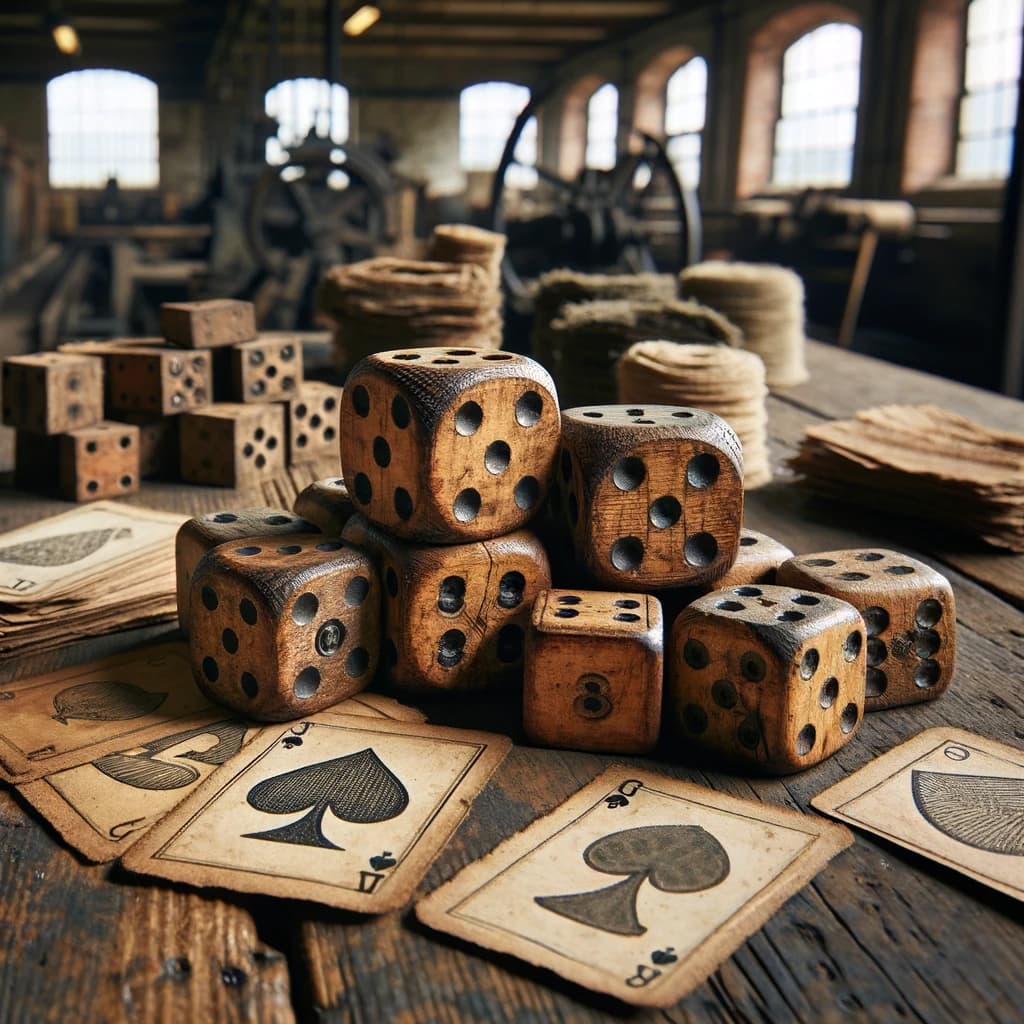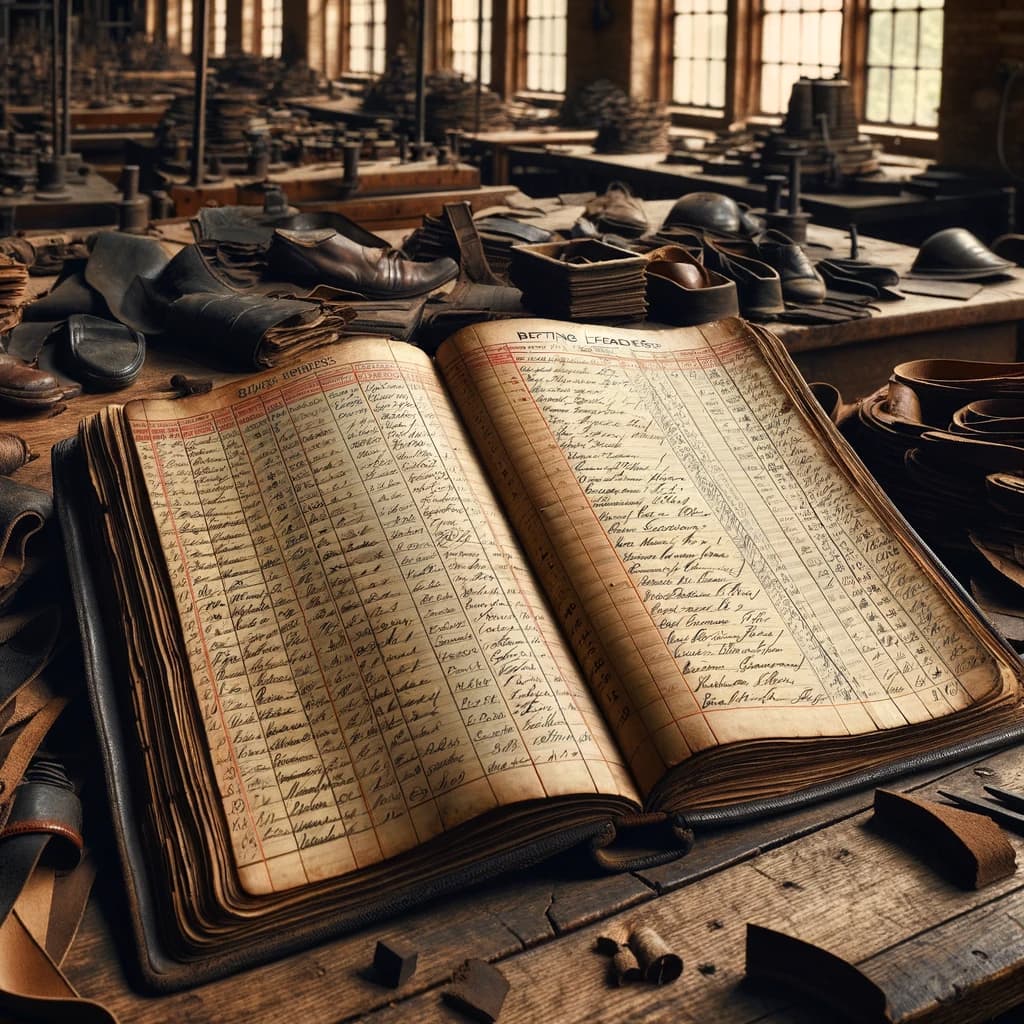Exploring the Convergence of Industrial Archaeology and Gambling Artifacts
As a team of enthusiasts in archaeology and historical research, we’ve ventured into the intriguing realm where industrial archaeology meets the discovery of gambling artifacts. Our explorations at old industrial sites and factories have unearthed a curious collection of items related to gambling. These range from primitive dice to exquisitely crafted playing cards, each telling a unique story of the past. These discoveries allow us to peek into the daily lives of factory workers, where amidst the roar of machines and the monotony of their routine, they found moments of joy and leisure in simple games. One such site led us to uncover gaming artifacts pointing to https://independentcasinos.net/casinos-not-on-gamstop/, giving us a glimpse into underground gambling practices.
Shedding Light on the Social Dynamics of Factory Workers
The artifacts we’ve uncovered are significant windows into the social lives of those who toiled in factories. These historical relics reveal that factory workers sought solace and companionship in games of chance and skill. This aspect of their lives is often overshadowed by their industrial contributions. However, through these findings, we learn about their leisure activities, providing a fuller understanding of their experiences during the industrial era.
Leisure and Labour: A Historical Perspective
Our investigations have also highlighted the intricate relationship between leisure and labour in these historical settings. The gambling artifacts don’t just represent the games played; they symbolize the social structures, relationships, and even the subtle acts of resistance against the rigours of industrial life. Each item, from a deck of cards to a pair of dice, carries stories of friendship, competition, and the human need for respite from daily toils.
Contemplating the Past, Understanding the Present
These artifacts, while remnants of a bygone era, resonate with our present. They remind us that leisure activities, such as gambling, have been an integral part of human societies across ages. They offer us a richer comprehension of human nature, illustrating how entertainment and social interaction have always been crucial in coping with the demands of everyday life.
In summary, our exploration into the world of gambling artifacts in industrial contexts uncovers more than just historical data. It reveals the enduring spirit of humanity, a constant quest for enjoyment and connection amidst life’s challenges. These archaeological finds not only recount the past but also offer insights into the universal human condition, bridging the gap between then and now.
Gambling and Industry: A Historical Perspective
Embarking on a historical journey, we find that gambling has been a vibrant thread in the fabric of industrial society. The onset of the Industrial Revolution brought not just technological advancements but also significant shifts in social dynamics. Factories became the new epicentres of work, drawing people from diverse backgrounds into a shared space. In these environments, gambling emerged as a common leisure activity. Workers often engaged in card games, dice, and betting pools, creating a unique subculture within the industrial landscape. These activities were not just pastimes; they served as a crucial outlet for stress relief and social bonding in the demanding and often monotonous world of factory work.
The Life and Times of Factory Workers
The daily life of factory workers during the industrial era was characterized by long hours, stringent routines, and harsh working conditions. Yet, within these confines, a rich and complex social environment thrived. Workers found ways to inject a sense of community and enjoyment into their lives, and gambling played a significant role in this. The games they played were not merely about winning or losing money; they were about camaraderie, breaking the monotony, and asserting a sense of autonomy in a tightly controlled environment. Whether it was a quick game during a break or a more organized event after hours, these gambling activities were a vital part of the social fabric of the time.
Gambling: A Reflection of Industrial Society
The prevalence of gambling in industrial settings is more than a footnote in history; it’s a reflection of the society of that era. The popularity of gambling amongst factory workers was not just due to the thrill of the game but also a manifestation of the broader social and economic conditions. It offered an escape, a way to dream of better fortunes, and a platform for social interaction in an otherwise rigid and hierarchical setting. This aspect of industrial life provides a fascinating insight into how people adapt and find joy in challenging circumstances, a theme that resonates even in today’s fast-paced, technology-driven world.
Key Archaeological Discoveries
- Handmade Dice and Card Pieces from a 19th-Century Textile Mill in Manchester, England
- Significance: Showcases the ingenuity and resourcefulness of factory workers. These artifacts represent a unique intersection of work and play, illustrating the workers’ desire for leisure despite their hardworking environment.
- Implications: Highlights workers’ ability to turn everyday materials into entertainment, reflecting a creative outlet beyond their routine tasks. This ingenuity demonstrates the human spirit’s resilience in the face of monotonous or challenging work conditions.
- Betting Ledgers from an Old Shoe Factory in Northampton
- Significance: Provides detailed records of betting activities amongst workers. These ledgers serve as a tangible connection to the past, offering a rare glimpse into the everyday lives of those who lived over a century ago.
- Implications: Indicates a structured and possibly formally recognized aspect of gambling in worker life, emphasizing its prevalence and organization. This organization may point to a sophisticated subculture within the factory, where workers found camaraderie and relief.
Deciphering the Artifacts: Insights into Worker Recreation
- Handmade Nature of Dice and Cards
- Indicates gambling as a pastime and a creative expression. This creativity in leisure activities showcases a form of resistance to the rigid structure of factory life.
- Suggests workers’ ability to create entertainment from limited resources. This resourcefulness is a testament to their adaptability and innovative spirit in a constrained environment.
- Betting Ledgers
- Reflect a structured approach to gambling. This structure could have played a role in establishing a sense of order and control in the workers’ otherwise unpredictable lives.
- Demonstrate gambling as a well-established aspect of worker life. Their presence suggests a complex social network within the factory, where gambling acted as a key component of social interaction.
Implications of the Findings
- Broader Understanding of Social and Cultural Dynamics
- Artifacts illustrate how workers sought agency and autonomy. This pursuit of autonomy is a powerful reflection of the human desire for self-expression and identity in all spheres of life.
- Highlight the communal aspects of leisure activities, where gambling acted as a social binder. Gambling not only served as entertainment but also as a vital means of forging and maintaining social bonds amongst workers.
- Challenges to One-Dimensional Portrayals of Industrial Workers
- Reveals a complex, nuanced picture of workers’ lives. This complexity adds depth to our understanding of the industrial era, moving beyond simplistic narratives of exploitation.
- Showcases the resilience and adaptability of the working course during a transformative historical period. Their ability to find joy and community in harsh conditions speaks volumes about the strength of the human spirit.
These discoveries offer invaluable insights into the leisurely pursuits of factory workers, providing a unique perspective on the social fabric of the industrial era, and revealing the multifaceted nature of life during this pivotal time in history.
Social and Cultural Implications

Impact of Gambling on Factory Workers’ Lives and Communities
The artifacts and historical records unearthed reveal a profound impact of gambling on the lives and communities of factory workers. This wasn’t just about betting money; it was about creating a sense of belonging and identity in an otherwise impersonal industrial landscape. For instance, in the late 1800s, in the heart of England’s industrial districts, workers often gathered for informal gambling sessions after long shifts. This fostered a sense of community, providing a platform for sharing experiences, venting frustrations, and enjoying camaraderie. These gatherings were not just recreational; they were integral to the social fabric, helping workers navigate the stresses of industrial life and forge strong interpersonal bonds.
Gambling Across Historical Contexts: A Comparative Analysis
When we compare these practices with gambling in other historical contexts, intriguing parallels and contrasts emerge. For example, in ancient Rome, gambling was a popular leisure activity amongst soldiers, much like the factory workers of the industrial era. However, while Roman soldiers gambled as a way to pass time and deal with the stresses of military life, industrial workers used gambling to create a sense of community and escape the monotonous routine of factory work. This comparison underscores how gambling has consistently served as a crucial outlet for different groups throughout history, adapting to the unique challenges and dynamics of each era.
Archaeological Evidence and Broader Cultural Reflections
The archaeological evidence from factory sites paints a vivid picture of the cultural landscape of the industrial era. The discovery of playing cards and betting tokens in factory common rooms and workers’ quarters highlights how integral these activities were to their daily lives. This not only provides insights into the leisure practices of the time but also reflects broader cultural trends. Gambling amongst factory workers was a microcosm of the larger societal shifts towards recreation and community-building in an age of rapid industrialization and urbanization. It illustrates how people adapt traditional forms of leisure to new social and economic realities, preserving a sense of identity and continuity amidst profound change.
Conclusion and Further Research
Summarizing the Interplay of Gambling and Industrial History
As we draw our exploration to a close, the findings unearthed present a vivid tapestry of life during the industrial era. The discovery of gambling artifacts in factory settings — ranging from handmade playing cards in Manchester’s textile mills to the intricate betting ledgers in Northampton’s shoe factories — provides a unique lens through which to view the past. These findings not only enrich our understanding of the recreational habits of factory workers but also offer a more nuanced perspective of industrial history. They reveal a world where the rigors of factory life coexisted with moments of leisure and camaraderie, highlighting the human aspect often overshadowed by the focus on technological and economic advancements.
Future Avenues in Industrial Archaeology and Social History
Looking ahead, these discoveries open up several exciting avenues for future research in industrial archaeology and social history. One promising area is the comparative study of gambling artifacts across different industrial regions and eras, which could provide deeper insights into regional and temporal variations in leisure practices. Additionally, there is a rich potential in exploring the socioeconomic factors that influenced gambling activities amongst workers, such as wage patterns, work schedules, and factory regulations. Another intriguing aspect is the potential impact of these leisure activities on worker productivity and factory culture, offering a more holistic view of industrial life.
Embracing an Interdisciplinary Approach
To truly harness the potential of these findings, an interdisciplinary approach is essential. Collaborations between archaeologists, historians, sociologists, and even psychologists could yield a more comprehensive understanding of the impact of gambling on the lives of industrial workers. Such collaborations could also explore how these historical leisure practices have shaped modern attitudes towards gambling and recreation. By integrating different perspectives and methodologies, future research can build on the foundations laid by these initial discoveries, offering richer and more diverse insights into the complex tapestry of industrial history.
